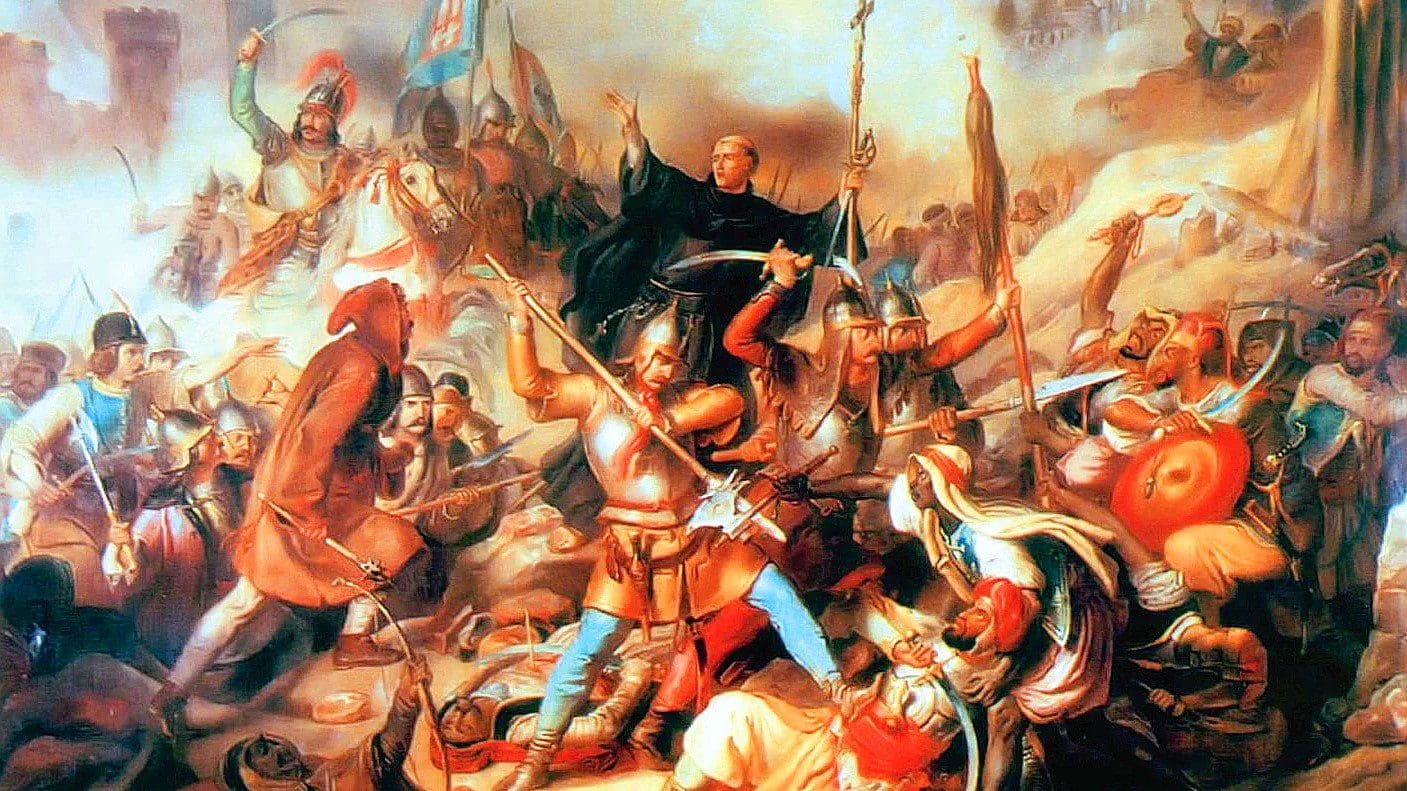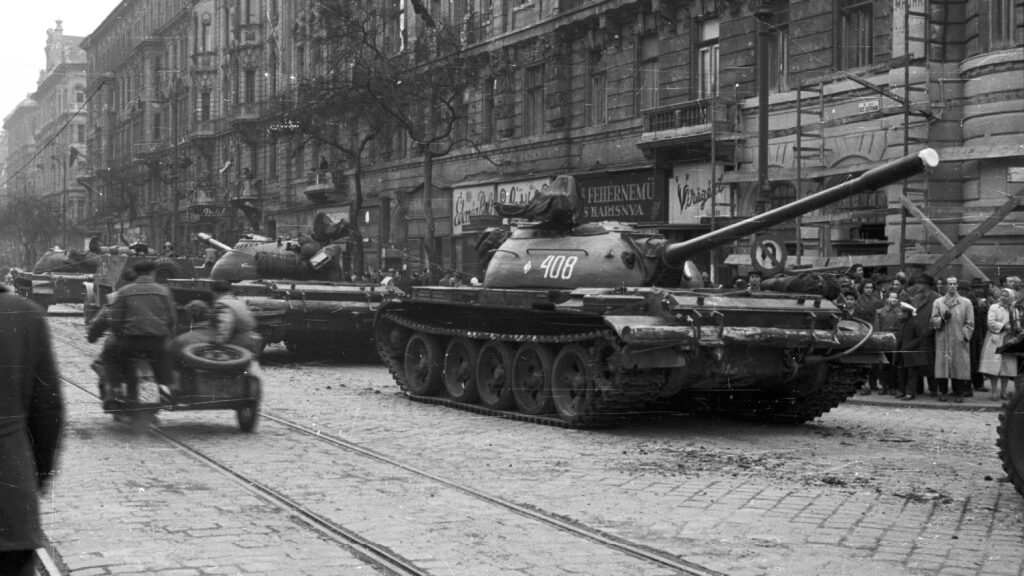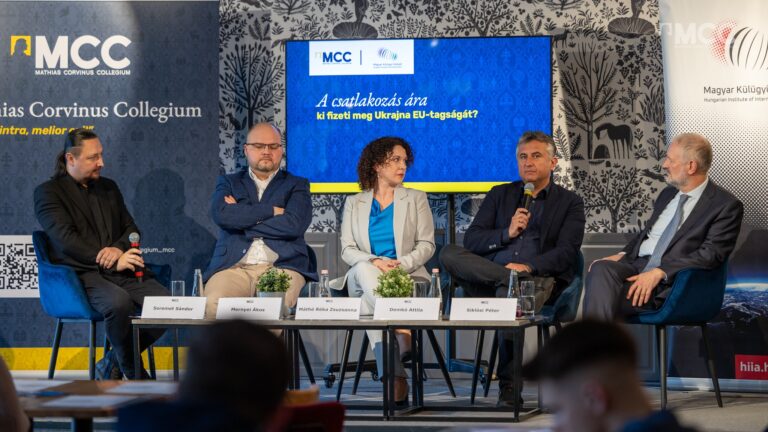When reading the title, at first we cannot really decide which era it refers to: whether to centuries ago or just yesterday. The ‘bulwark’ image has become a popular term in political rhetoric all over the world, similar to that of ‘crusades’.
The idea of the ‘Bulwark of Christendom’ (Antemurale Christianitatis) originally appeared in the Latin language, often in the form of various synonyms (such as antemurale or propugnaculum meaning ‘bulwark’ or ‘rampart’, murus meaning ‘wall’, and scutum meaning ‘shield’), and understandably always in the context of the image of an enemy.[1] This concept arose in all border areas where two civilisations and religions came into contact. However, the conscious and regular use of the term is linked to the Italian humanists of the 15th-century Renaissance, who greatly contributed to the formation of the modern image of Europe in this sense, too. The term’s modernity is also confirmed by its relationship with the emerging concept of the nation, the appearance of diplomatic missions and book printing, which all played an important role in its popularisation.
The ‘Bulwark of Christendom’ is a metaphor that came to be used in the areas of contact between Christianity and the Muslim world, such as in Spain and on the islands of Rhodes, Malta, and Cyprus, as well as in the political discourse of people affected by the Ottoman–Turkish expansion, such as the Poles, Hungarians, Serbs, Croats, Albanians, Czechs, Austrians, and Venetians. Yet, among the Central European countries, it achieved a leading role primarily in Hungarian and Polish history-writing and self-interpretation—here, it is mostly in the case of these nations that it has become part of the national self-image.
Several of the mentioned terms appeared in Hungarian diplomatic correspondence with the papal and imperial courts long before the 15th century. In his letter to the Pope after the Mongol attack in 1250, King Béla IV of Hungary compared the role of his country to that of a wall, and in his arguments, he called the River Danube the water of ‘resistance’. In the King’s letter, the early idea of a ‘bulwark of Europe’ was expressed, although a few lines below he already threatened the Pope with the possibility of an agreement with the Mongols.[2]
However, the spread of the ‘bulwark’ metaphor was connected to a greater extent to the advance of the Ottomans in the Balkans.
In the 1390s, the Turks reached the south-eastern borders of the Kingdom of Hungary, and thus that of Latin Christianity as well, which turned the rhetoric of Antemurale Christianitatis into a bitter everyday reality. In 1396, the bloody defeat at the Battle of Nicopolis was also connected to the emergence of the role of the Hungarians as the ‘Bulwark of Christendom’, which mobilised the whole of Europe. In short, the phrase ‘wall and shield’ (scutum atque murus inexpugnabilis) appeared in a 1410 letter sent by Antipope John XXIII to King Sigismund of Hungary, which was then quickly adopted by the Hungarian royal chancellery. In 1417, when the Pope recognised the royal right of patronage of the Hungarian kings, he also accepted the reasoning of King Sigismund—thus, Sigismund won this privilege in view of his services to all of Christendom and Hungary’s heroic resistance to Ottoman expansion.[3] In the following decades, it was no longer only metaphorically that the final border fortress system built at the southern borders of Hungary between the Eastern Carpathians and the Adriatic Sea, which existed until 1526, protected the West. From then on, examples of the use of the term became ever more frequent: in 1440, King Wladislaw of Hungary and Poland called both his countries ‘the wall and shield of the faithful against the barbarian peoples in this corner of Europe’[4], while an Italian humanist called the King himself the ‘bulwark of the Christian Republic’.
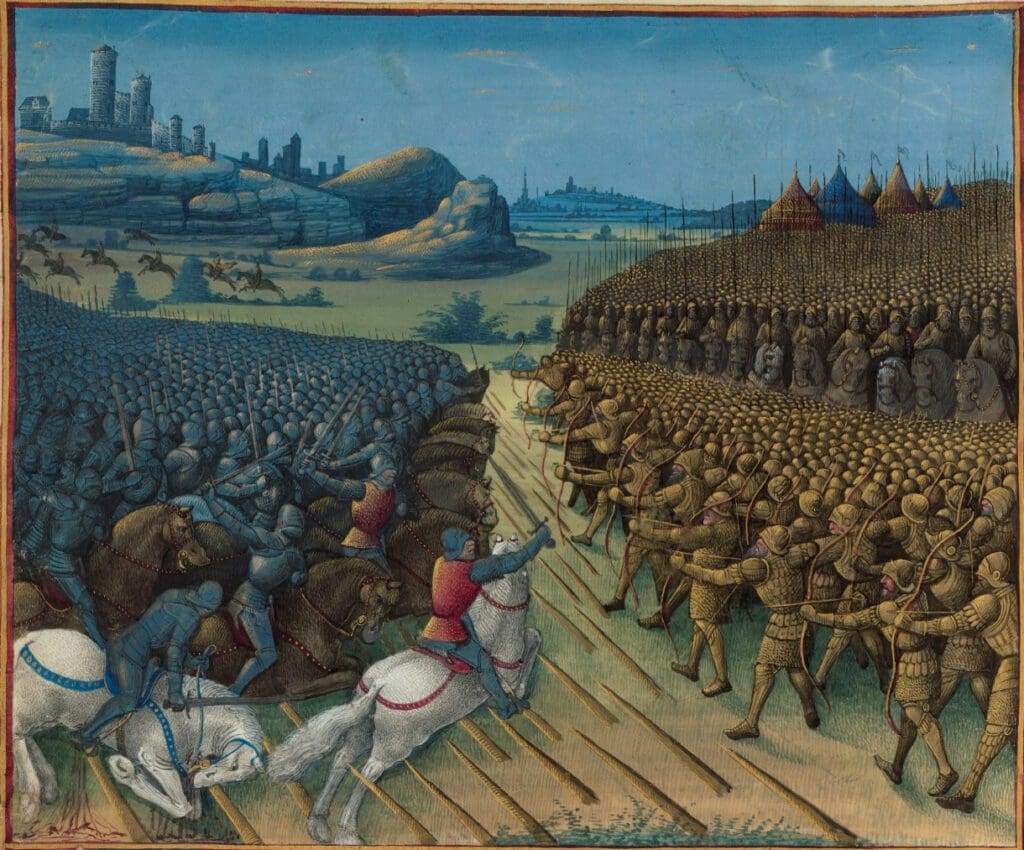
Nevertheless, a decisive turn was brought about by the Ottomans occupying Constantinople in 1453. The fall of Constantinople, or the ‘Second Rome’, came as a shock to Europe, and the fear of Islam took hold even in countries far from the Balkans. While the shock did not trigger effective military countermeasures, it created a language with common ideological roots, the key concept of which was ‘bulwark’. In the following two years, the theme of the German imperial meetings (Diets) convened with envoys invited from all over Europe was how to stop the enemy at the borders of the Kingdom of Hungary.
At that time, of course, Hungarians were not short of praise at all.
As the bishop of Pavia put it, ‘think of the Hungarian Kingdom, of whose praise I cannot speak enough, which threw itself so often against so many calamities and dangers for the defence of the condition of Christianity. Its power, its uprightness, its battles, its overthrows meant peace for the rest of the world.’[5] Chancellor János Vitéz, a representative of the Hungarian King and future Archbishop of Esztergom, also confirmed this: ‘By objecting its own flanks, the remaining bodies and hearts of Christianity were secured. This concern and care to protect the faith and the faithful was left to my King by a hereditary law from his ancestors.’ According to Enea Silvio Piccolomini, the chancellor of the German Emperor, later Pope Pius II, ‘the Hungarians have been the shield of our faith, the wall of our religion. If Hungary is defeated or by force joined with the Turks, neither Germany nor Italy will be safe and the river Rhine will not render the French secure enough…Hungary is our shield as well as the wall and strongest rampart of our religion.’ Typically, the humanist Piccolomini is the one who consciously embraced the ‘bulwark’ rhetoric in his use of words and politics. For him, this logically implied the formulation of the image of a Catholic Europe: ‘If we want to confess the truth, in many centuries before, Christian society had not suffered a greater disgrace. In former times, we were wounded in Asia or Africa, which means in foreign territories; but now, we are deeply distressed and forced to give way in Europe, which is our native land, in our very own house, in our home.’ The future pope believed that Christian Europe began where the Ottoman advance broke. Therefore, Piccolomini is rightly considered to be the most conceptual developer of this concept, which is further supported by a large number of manuscripts and then printed distributions of his speeches as well. And as Chancellor János Vitéz not only heard his speeches but also had Piccolomini’s letters in his library, the ‘bulwark’ metaphor started to develop into a stereotype.
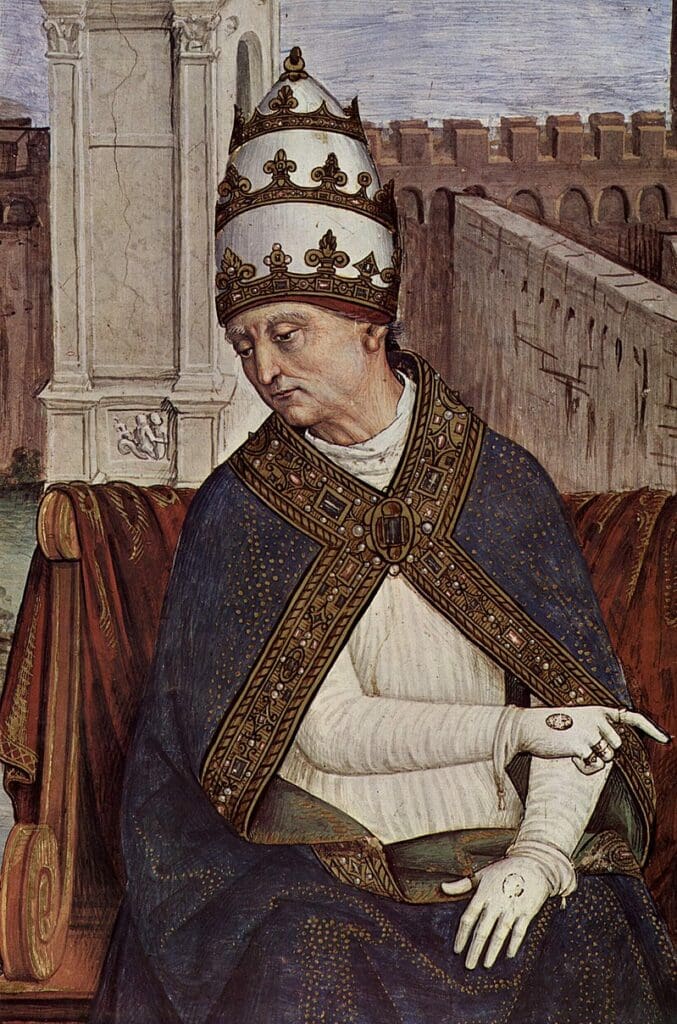
From then on, the ‘bulwark’ image retained a prominent presence in correspondence with the Hungarian court and in Hungarian court propaganda. In 1458, Pope Callixtus III called John Hunyadi, voivode of Transylvania and a leading Hungarian military and political figure, the ‘Bulwark of Christendom’ (propugnacula), while Hungarian Latinist and poet Janus Pannonius saw him as the ‘Bastion of Pannonia’, but John Hunyadi’s son King Matthias I of Hungary also earned this title. It is true, though, that in the letters of some popes, several strongholds also earned, pars pro toto, the title of the ‘Bulwark of Christendom’, such as Belgrade, which was heroically defended in 1456, or Jajce Fortress, which was defended against the Ottomans until 1527. After the Ottoman occupation of the Kingdom of Hungary, the ‘bulwark’ metaphor was finally inherited by the Croats and the Habsburgs, and in 1548, it was already Vienna that was mentioned as the most important city of Christendom (höchst Hauptbefestigung der Christenhait), not without reason.
The idea of the ‘Bulwark of Christendom’ expressed real and positive patriotic traditions in the language of politics.
At the time of the Battle of Mohács in 1526[6], according to historian István Brodarics, an actual participant in the battle, the Hungarians saw their entire history as a story of continuous sacrifices made ‘for five hundred years with their own blood and at their own expense’ in defence of all of Europe against the external enemy.
As a metaphor of political language, the image of the ‘bulwark’ suggested already at its birth that while the Hungarians were defending their country against the Muslim conquest, they were also defending the whole of Catholic Europe. Behind this rhetoric, however, was the need to acquire the moral and financial support necessary for the defence of the country—mainly from the Pope and the German Empire. At the same time, the idea of the ‘Bulwark of Christendom’ became one of the defining pillars of Hungarian historical consciousness and sense of mission, which has marked Hungary’s place in the Western Christian world as its defender since the dedication of István Werbőczy’s manual of Hungarian medieval customary law (1514) to the present day.
[1] Paul Srodecki, Antemurale Christianitatis. Zur Genese der Bollwerksrhetorik im östlichen Mitteleuropa an der Schwelle vom Mittelalter zur Frühen Neuzeit, Matthiesen, 2015.
[2] https://www.hungarianconservative.com/articles/culture_society/christian-solidarity-in-the-shadow-of-the-mongol-invasion/
[3] Péter Tusor, The Papal Consistories and Hungary in the 15th–16th centuries. To the history of the Hungarian Royal Patronage and Supremacy, Budapest–Rome, 2012, pp. 44–45.
[4] Paul Srodecki, ‘Władysław III and the Polish-Hungarian Bulwark topoi against the Background of the Ottoman Threat in the 15th Century’, in Dániel Bagi, Gábor Barabás, and Zsolt Máté (eds.), Hungaro–Polonica Young Scholars on Medieval Polish–Hungarian Relations, Pécs, 2016, p. 334.
[5] Kerstin Weiand, ‘The Origins of Antemurale Christianitatis Myths: Remarks on the Promotion of a Political Concept’, in Liliya Berezhnaya and Heidi Rampart (eds.), Rampart Nations: Bulwark Myths of East European Multiconfessional Societies in the Age of Nationalism, New York, 2019, 35–37.
[6] https://www.hungarianconservative.com/articles/culture_society/a-dark-day-in-history-remembering-the-battle-of-mohacs/
Related articles:

